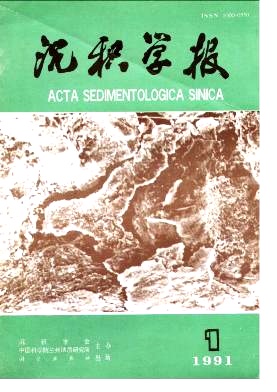Study on the Sedimentology of Late Devonian Manganese Ore Deposit in Xialei, Guangxi
- Received Date: 1988-08-18
- Publish Date: 1991-03-10
Abstract: Xialei manganese ore deposit consists of three ore beds. And the microfacies of the ore beds can be grouped into three types: 1. Cold water autochthonous chemical sedimentary manganese carbonate orebeds. 2. Hydrothemal autochthonous colloidal- chemical sedimentary silicatemanganese carbonate orebeds.3. Allochthonous recleposited gravity folw silicate-manganese carbonate orebeds. In the hydrothemal sedimentary manganese ore deposit, besides of manganese carbonate minerals, the associated minerals are rhodonite, biotite, actinolite, chlorite, manganese epidote, and manganoferro antigorite.Minerals such as hcmatite. potash-feldspar, barite, garnet and braunite, often shown as minor or local accumulated minerals. These hydrothermal minerals are often mixed and formed laminae, thin beds, bands, oolitics of pisolitic grains, horizontal or fine wavy laminae.Oolites and pisolitic grains which rich in manganese orebeds show obvious boundary, their cores are constituted by manganese carbonate and silicate minerals, no elastics were found. The colloidal-chemical deposits as a core, continously deposition and growth around it and the grains were formed, Oolitic, pisolitic grains and hydrothermal minerals are roughly distributed over the same range, and they have genetic relationship. The ore deposit may be fall into three zones in horizontal, (1) inner-zone composed of manganese carbonate, silicate and oxide minerals mixture. (2) biotite-manganese carbonate transitional zone. (3) outer manganese carbonate zone. Muddy limestone in the bottom of orebeds has a δC13 value of 0.03 per mil, this proved that the carbon came from seawater.The δC13values of manganese carbonate has a range from-2.83 to -14.29 per mil, averaged about -7.06 per mil, this value is roughly accord with that of the carbonates originated from magma, thus, it can be considered that the carbon was from deep basic magma. The mineralization model is summariaed as follows: In the trough in platform, when basic magma intruded, hot juvenile gas, liquid and dissolved mineralizing material ascended along cracks, therefore, resulted in the convection of seawater and subsurface water. Some dissolvable matter were leached and extracted, then were carried to the segs located in the bottom of the trough and a hot water pool formed.The silicate-carbonates' manganese were deposited.The sediments on the low slope zone were transported by gravity flow to the trough and covered autochthonous deposits.
| Citation: | Zeng Youyin. Study on the Sedimentology of Late Devonian Manganese Ore Deposit in Xialei, Guangxi[J]. Acta Sedimentologica Sinica, 1991, 9(1): 73-80. |






 DownLoad:
DownLoad: